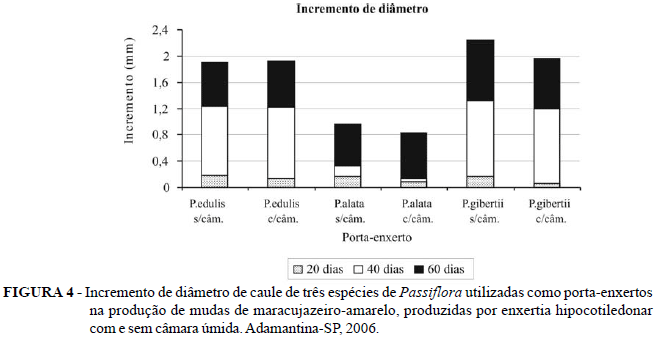The experiment was installed in Adamantina, SP, Brazil, from December 2005 to April 2006, aiming to evaluate yellow passion fruit plants (Passiflora edulis Sims) development and survival, when they were grafted on three rootstocks during the nursery phase. The experimental design was in randomized blocks in a factorial scheme 3 x 2, with four replications. The studied factors were three rootstocks (Passiflora edulis, P. alata and P. gibertii) in two environments (with and without humid chamber). Seedlings were grafted by the cleft grafting method. The variables evaluated were: grafts height, rootstocks and grafts stem diameter, leaf number, internode length, survival percentage, aerial portion and roots fresh and dry weight. It was observed that the hypocotyledonary grafting was efficient for the three species of passion fruit. The species P. gibertii and P. edulis presented better result as rootstocks. The treatment with P. alata presented lower height plant, lower rootstock and graft diameter and lower survival percentage. The use of humid chamber did not favour any of the studied variables.
Asexual propagation; Passifloraceae; scion production; protected environment









